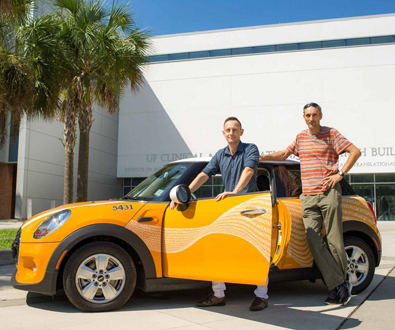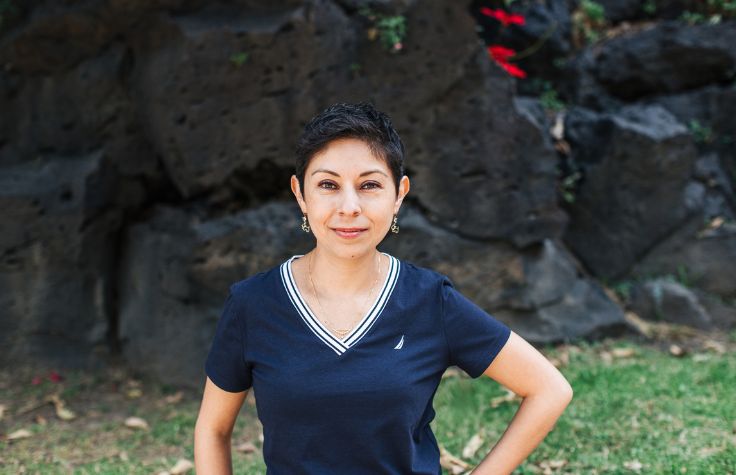
April 18, 2017
Since winning the Go Mini Scientific Challenge last year, Mattia Prosperi, MEng, PhD, Preeminence Associate Professor in the Department of Epidemiology at the University of Florida in the College of Public Health and Health Professions and the College of Medicine, has been busy. His MINI Cooper is used by the University’s HealthStreet community engagement program and Prosperi and his team have used splatology (collecting bugs that splat on the car) and conventional bug collection methods to track the spread of mosquito-borne viruses in Florida. We caught up with Dr. Prosperi to learn more about his research and recent findings.
Tell us about your study.
We know that we can sequence the DNA from insects to identify RNA signatures for diseases like Zika, dengue, and chikungunya. For our study, we collected mosquito samples to be sequenced from several areas in Florida using splatology and other methods of collection. With help from Volker Mai, PhD, MPH, Associate Professor at the University of Florida, Carla Mavian, PhD, a postdoc on our team, Jae S. Min, a PhD student, and Maria Ukhanova, our laboratory manager, we sequenced RNA from the mosquitos using the MiniSeqTM System. We also studied mosquitos bred in a lab and mosquitos previously found to be positive for Zika, as controls.
My background is in using computational tools to understand epidemiological data. In addition to analyzing the data from our samples, I also compared our results to those of researchers from other institutions in other geographies who have taken a similar approach to studying mosquitos as a means of detecting the spread of infectious diseases. In the next couple of months, I hope to publish a paper detailing what we’ve learned.
Splatology is a new concept for doing this type of research. Did you encounter any challenges in making it work as a method of collecting insects to study? How did you resolve them?
Although feasible in principle, collecting and sorting splatted bugs is not the most effective method of doing this type of research. Sometimes the exact location is possible only at the zip-code or county level. Sometimes, you need to preserve samples in freezers before processing. You also have to abide by biosafety regulations (writing a compliant protocol and getting it approved by the governance agencies can be time consuming but it is necessary). While we did do some collection with this method, we preferred to collect mosquito samples by other means, including setting up traps in locations reachable by the MINI Cooper on HealthStreet trips, working with mosquito control districts to obtain samples, and getting other samples from the UF entomology labs.
What has it been like to use the MiniSeq system in this research?
We had previous experience with the HiSeq® and MiSeq® systems so our learning curve was quick. I think the MiniSeq system is a cost-effective machine well-suited for small to medium scale projects. The throughput is smaller than the MiSeq system, but with carefully designed protocols it is possible to do a lot of sequencing.
What’s next for your MiniSeq system?
We have several next-generation sequencing projects active at the UF Emerging Pathogens Institute for which the MiniSeq system will be an invaluable resource. They include the characterization of a new strain of bacteria recently discovered by Dr. Mai, and full-genome sequencing of other diseases spread by insects.
Photo credit: Mindy C. Miller


